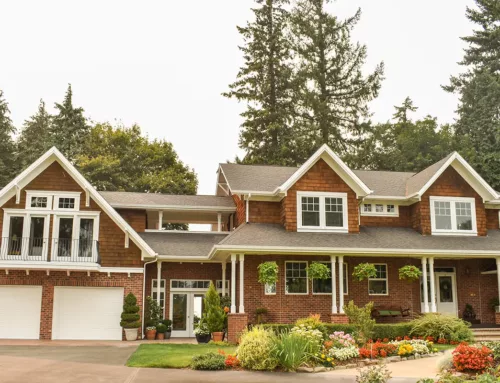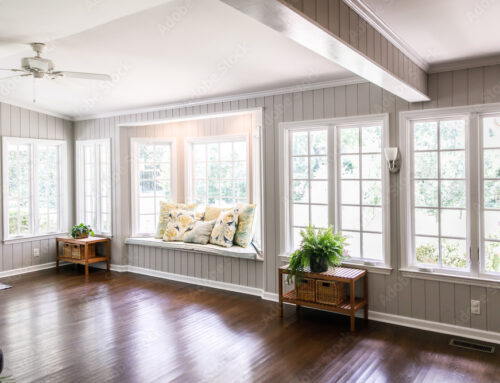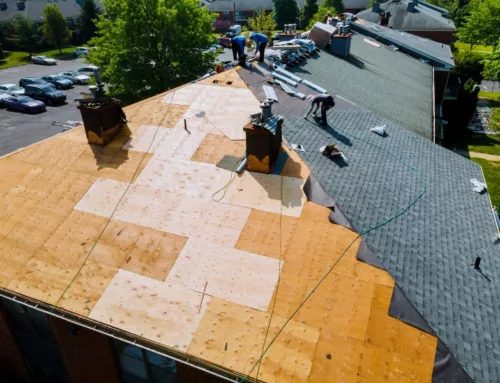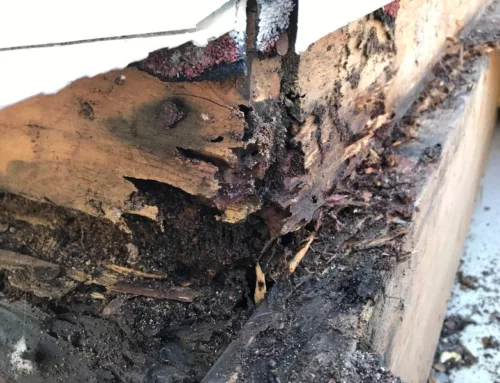When To Replace Siding
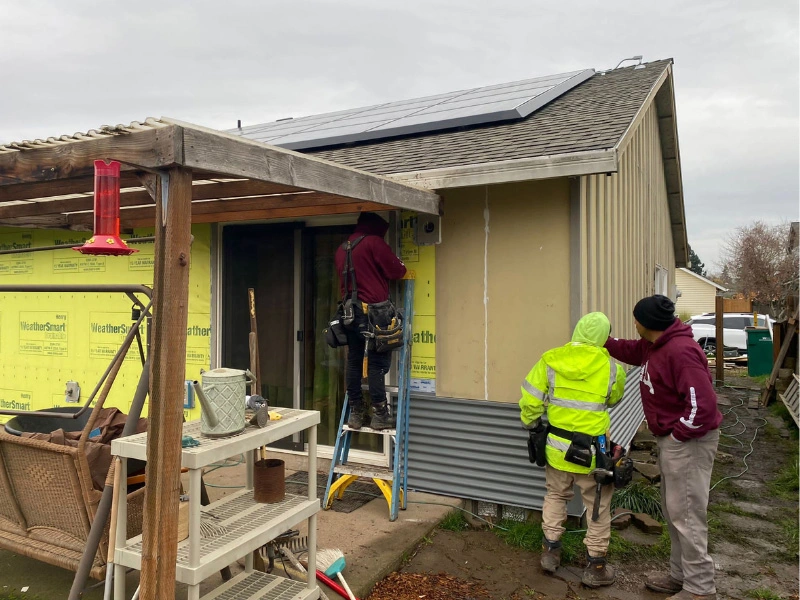
It can be hard to tell when it’s the right time to update your siding. There are many factors that play into the best time to get it done. These things depend on the condition of your siding as well as the material it’s made of and the time of year you need your siding to be replaced. We’ll take a look at each component and other questions that may arise, so you can make the best decision for your home.
Pro Tip: Having your siding inspected for damage, seen and unseen, might be the first course of action before deciding on a full-siding replacement. Your house siding might be faded on one side of your home, which would require a partial siding replacement instead of a full one. Getting a siding inspection by a trusted local siding company like Sister Siding will help you determine what’s needed and what isn’t.
How Long Does Each Type Of Siding Material Last?
If you’re not sure when to replace the siding on your home, determine the material first. Each siding material reacts differently to external elements, they also have different lifespans. The type of siding being used on your home is the main thing to consider when deciding when to replace it.
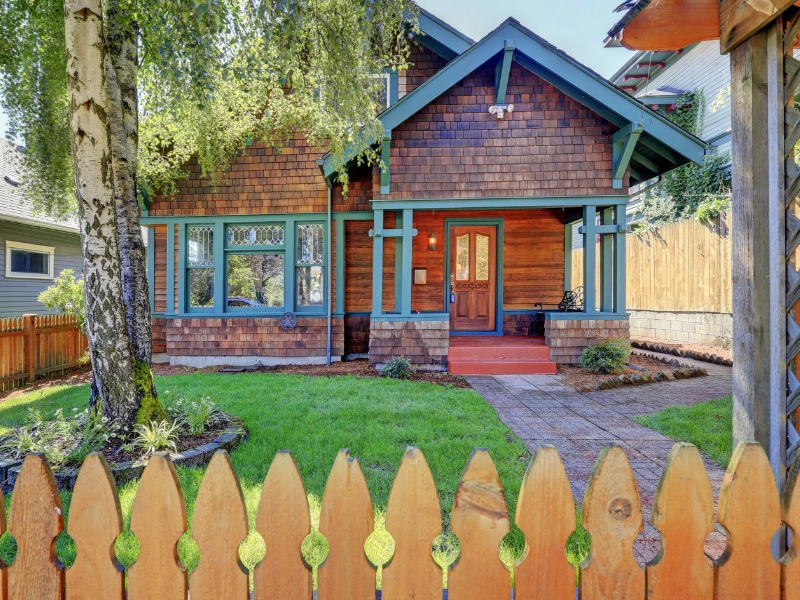
Wood Siding
People love wood siding for the natural aesthetic it brings to any home, especially here in the Pacific Northwest. Depending on how well you take care of it, wood siding can last anywhere from 15 to 40 years (“How You Can Know The Lifespan Of Your Siding |”) before needing to be replaced. It just requires a lot of maintenance and will typically need repairs through its lifespan, which will actually help hold off a full siding replacement when done in a timely manner.
Vinyl Siding
Vinyl siding is one of the most common types of siding materials because it’s a budget-friendly option. This material can last anywhere from 20 to 40 years (“How Long Does Siding Last?”) based on how it is maintained, and the type of weather it faces. That being said, vinyl can get damaged easily, so keep that in mind. Replacements may be frequent depending on external factors.
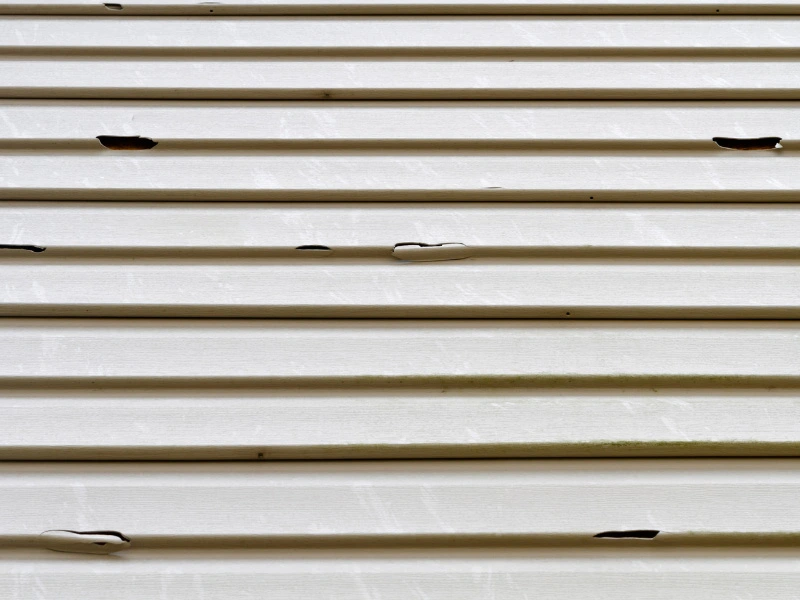
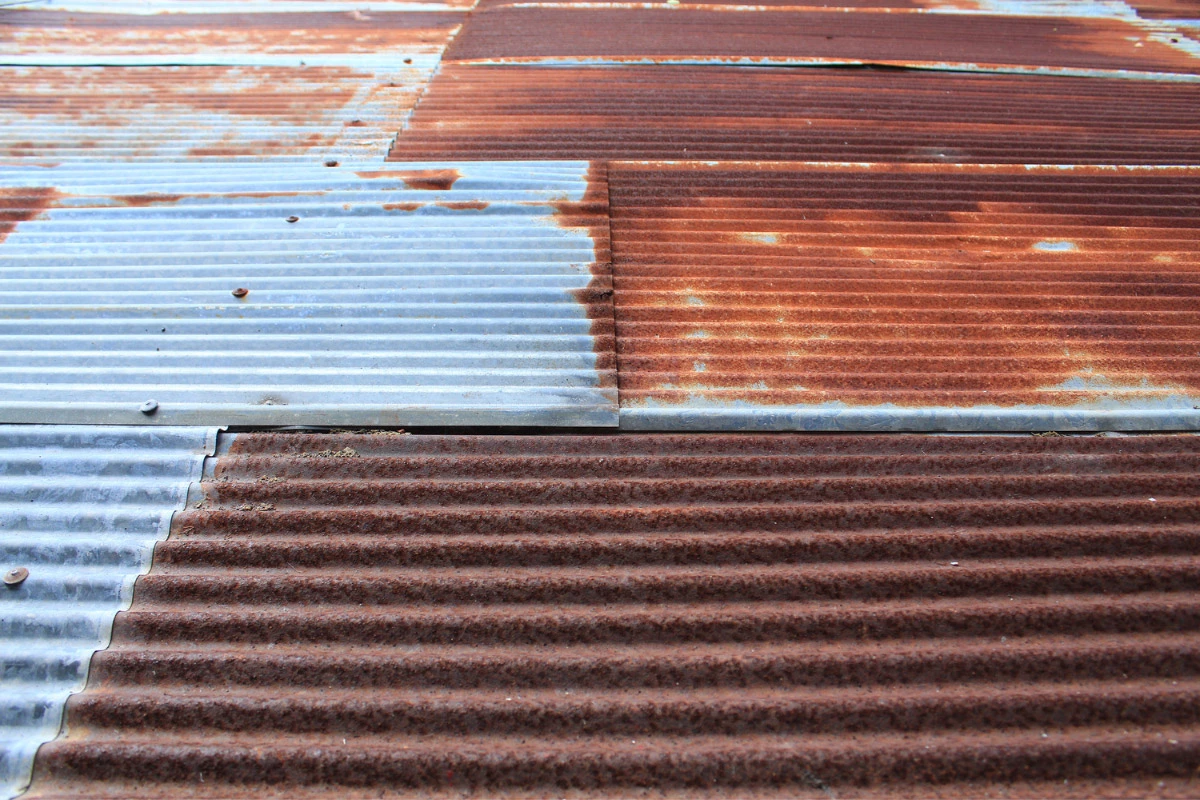
Aluminum Siding
Aluminum siding isn’t the most popular choice among homeowners today, but may be making a comeback (Watson) for its modern aesthetic. It can last up to 15 years (“When is it Time to Replace My Siding?”) before it needs a new paint job, but it may need to be painted often. Along with regular paint updates, the siding itself can last up to 30 years (“How You Can Know The Lifespan Of Your Siding |”). However, when in a humid or wet climate it is prone to rust without proper upkeep.
Pro Tip: If you live near or around the Portland Metro Area, Sister Siding can help with any of your interior or exterior painting needs.
Steel Siding
Slightly more expensive than aluminum, steel siding is another metal siding option. It’s more durable and can last up to 50 years (“Top 5 Things You Need to Know About Steel Siding”) with proper care. Steel siding material can offer the same contemporary look to a home as aluminum, but it’s lifespan is much longer.
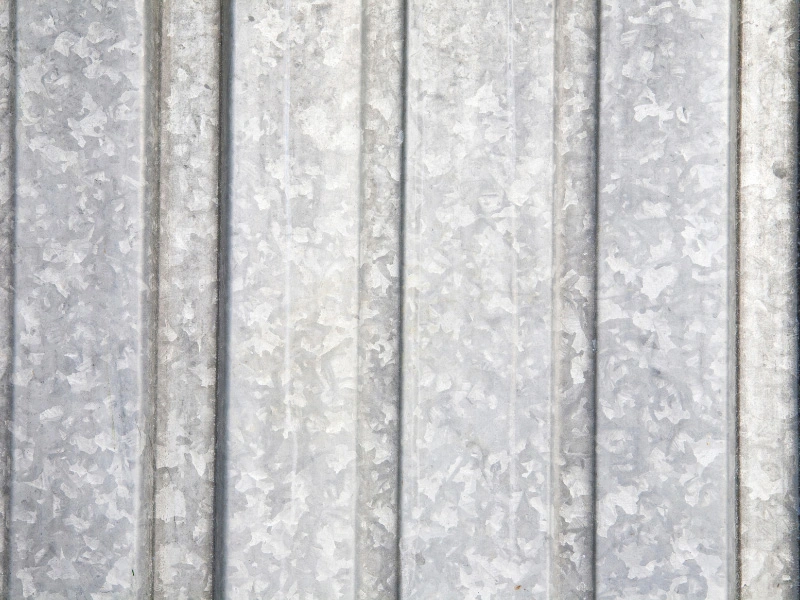
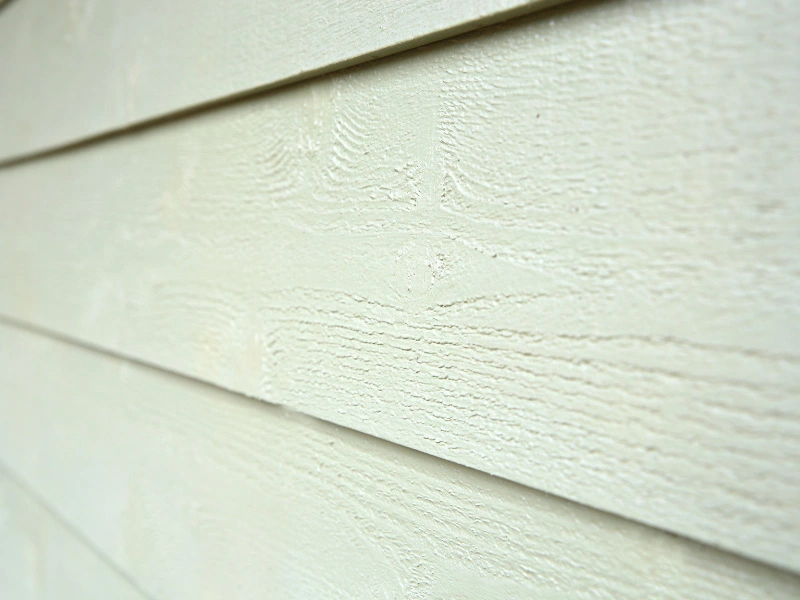
Fiber Cement Siding
Along with being low maintenance, fiber cement can last over 50 years (“What Is The Lifespan Of Your Vinyl Or Fiber Cement Siding?”). Fiber cement is resistant to pests, moisture, and fire, making it both a durable and convenient option. When it comes to repairs, you can replace individual siding panels instead of redoing your entire house. All the benefits of fiber cement make this type of material worth the cost.
How To Know When It’s Time To Replace Your Siding?
After figuring out the lifespan of the type of siding material you have on your house. The next process would be to take note of any damages you see. If the exterior of your house looks like it has seen better days, a full siding replacement might be in order. On the other hand, the damage might just need a minor repair, when caught soon enough. Below are the signs that indicate your home needs better protection.
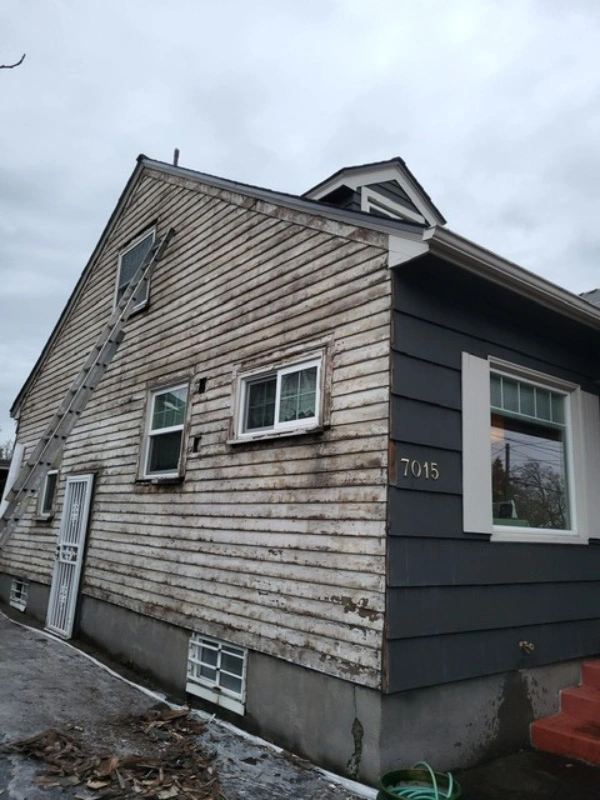
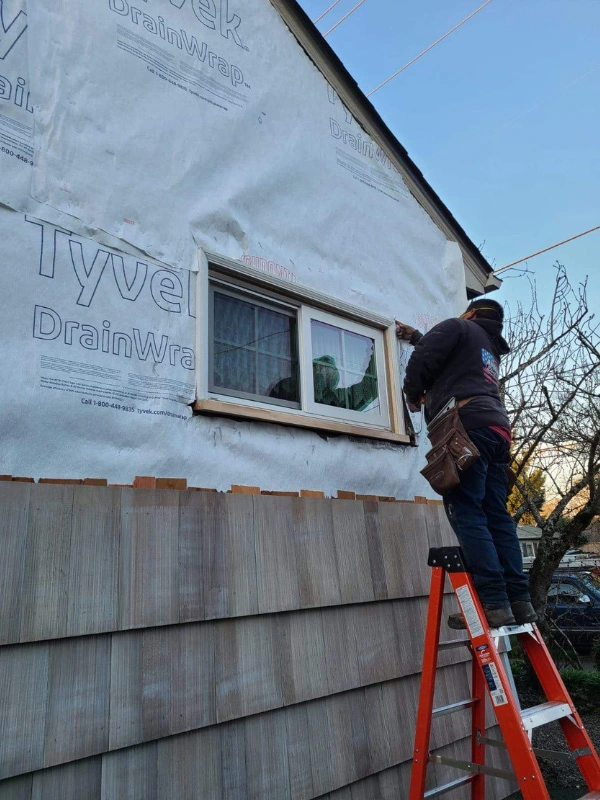
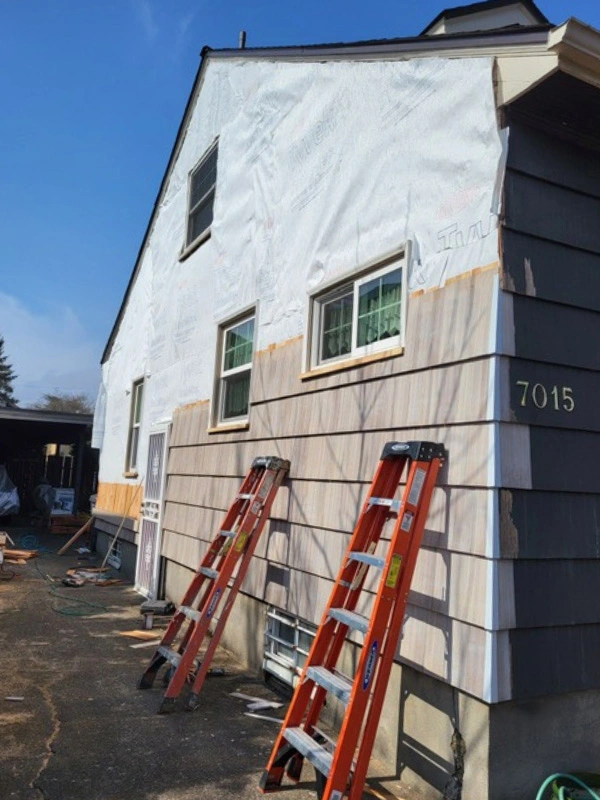
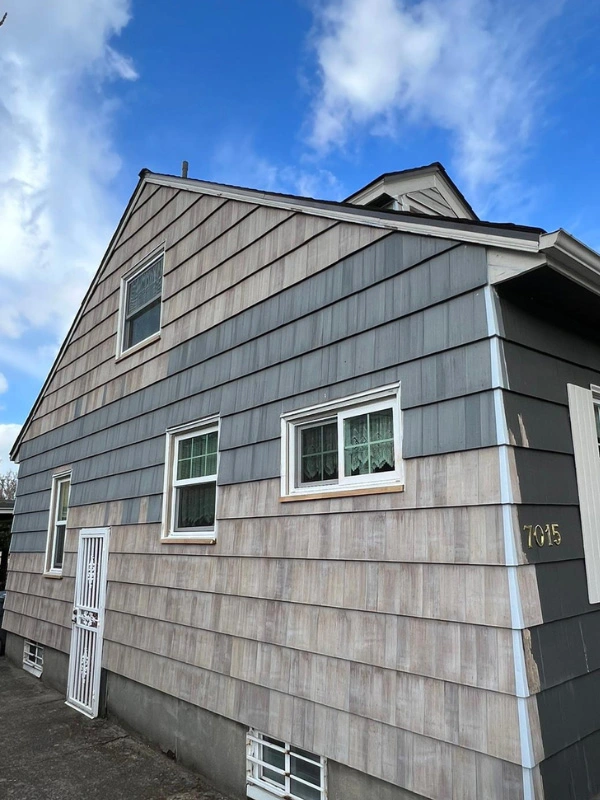
What To Look For During DIY Siding Inspection
Mold & Rot
Check the exterior of your home for signs of mold. Moisture can penetrate the seams of your siding from the smallest crack or chip. Exposure to water or humidity can cause dry or wet wood rot, which is a type of fungus that causes decay on wood siding (Bear Mountain) or any structural wood behind the siding as well. It leaves a gray or white growth that can be harmful to humans and even more harmful to the foundational structure of your home when left untreated.
Moisture Damage
Siding is the largest source of protection for your home. Spotting signs of water damage can be a more serious problem than it looks. Since water and moisture can seep below the surface, it can be hard to tell just how much damage is lurking behind your siding without a proper inspection. Your siding may only require a repair, but if left for too long, it could need a full-siding replacement due to a larger amount of structural damage (Rodriguez).
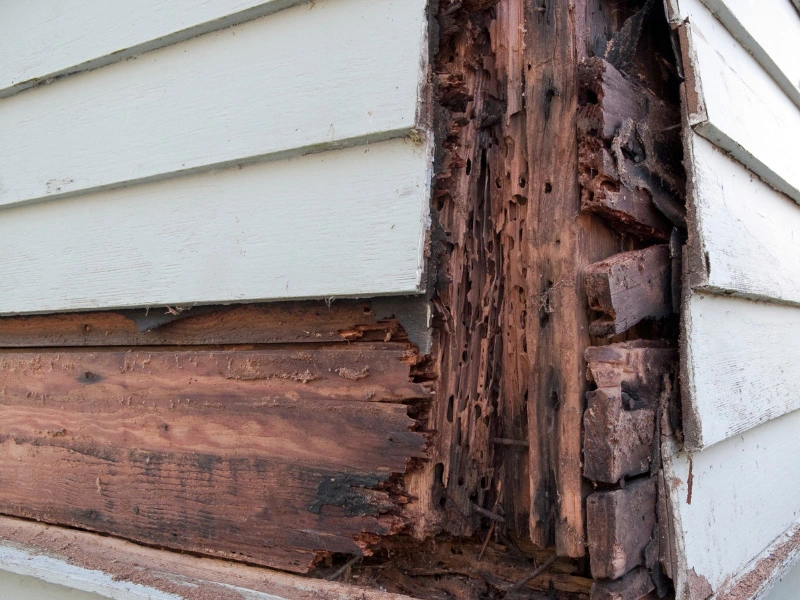
Pro Tip: Sister Siding offers siding inspections including free moisture inspections and free water seal inspections. If your home is in the Portland Metro Area, you can keep your siding routinely checked to be sure of no underlying water damage.
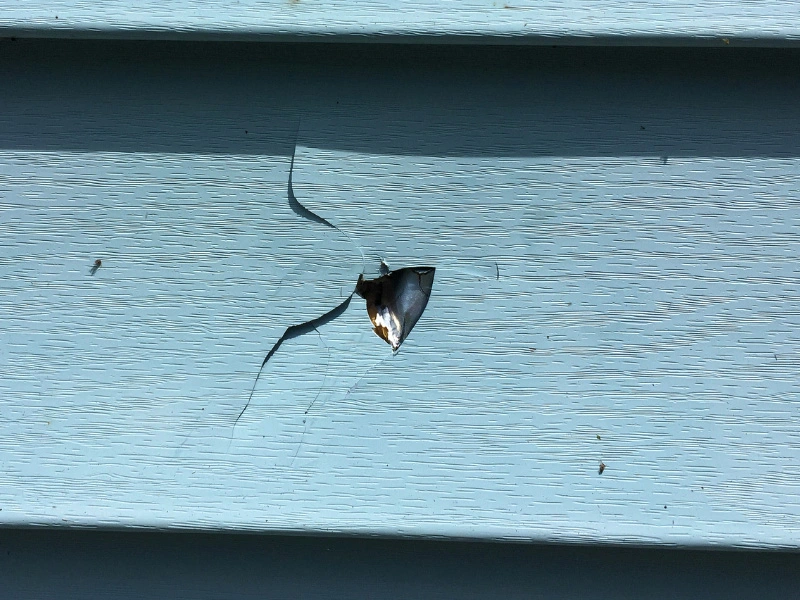
Damaged Siding Panels
Damaged siding panels can include cracks and gaps, looseness, bubbling, old paint, warping, and holes. Single panel damage could happen at any time for any number of reasons. These damages leave your home open to further damages. For instance, a gust of wind could pull off a loose panel and leave your home even more vulnerable to all kinds of weather elements and pests. All these siding damages lower your property value (Klauer) as well.
Higher Energy Bills
Pay attention to your energy bills to see if they’re rising. High energy bills may be a sign of damaged siding (“5 Signs of Damage To Your Siding”) due to using too much energy to heat or cool your home. Your home may be losing air due to poor insulation, which could be a result of damaged siding.
Pro Tip: To catch siding insulation issues, keep track of rising energy bills. It will be most noticeable in the winter months, but you can also watch to see if snow or frost melts off your home quicker than your neighbors’.
What Is The Best Time Of Year To Replace Siding?
After figuring out that you need to replace your siding, it’s good to think about when you might need it done. It’s not always as simple as picking a date. If you need an emergency installation, your siding project will have to take place sooner than later. If you do have the time to schedule something further in advance, it’s good to know what to expect in each season. While contactors are available throughout the year, the fall (Powers) is typically the most popular time of year to do so.
Replace Your Siding In The Fall
One of the main reasons early fall is the best time of year to replace your siding is because of the weather. The temperatures are cooler than the summer months, and there isn’t as much rain as the spring and winter, so it’s much dryer in the fall (Trautmann). Plus, after a siding installation in the fall, your home will be prepared for winter. You may also save money on the overall project itself. Some contractors offer discounts in the fall because they have fewer clients and want to make room for their winter inventory.
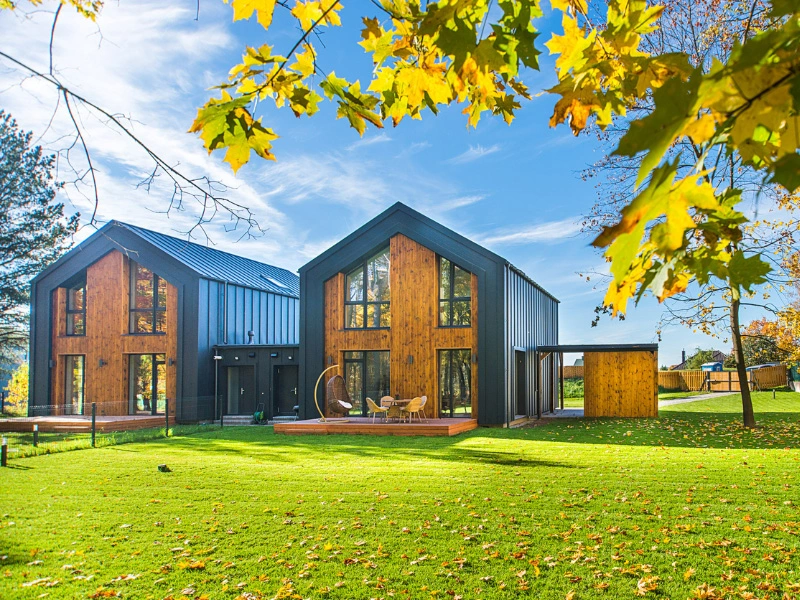
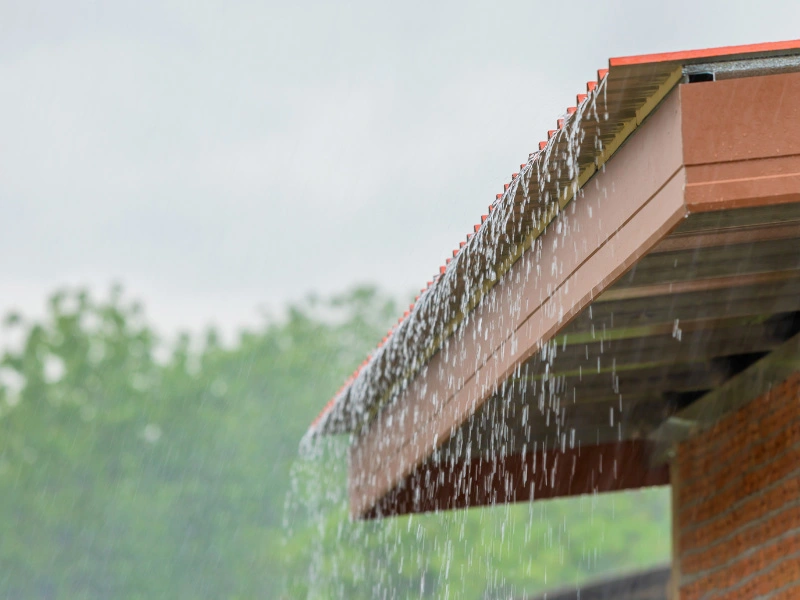
Replacing Siding In The Spring
The spring has the potential to be a good time to replace your siding. On a good day, the air will be cool and the sun will be out. The only issue would be wind and rain, which is a typical occurrence during spring in the Pacific Northwest. Sudden rain showers (Bonner) can cause a project to get put on hold—not to mention the moisture that can build up within your home and beneath your siding.
Replacing Siding In The Winter
Though winter is a popular time to request siding contractors, this time of year comes with challenges for the actual siding installations. Since siding materials must be kept out of the elements, projects may take longer and cost more money. Harsh weather conditions could delay your siding replacement, and the cold could cause the panels to contract. Not to mention, the winter is known for icy conditions which could cause a potential threat to installers (“Siding Replacement in Winter”).
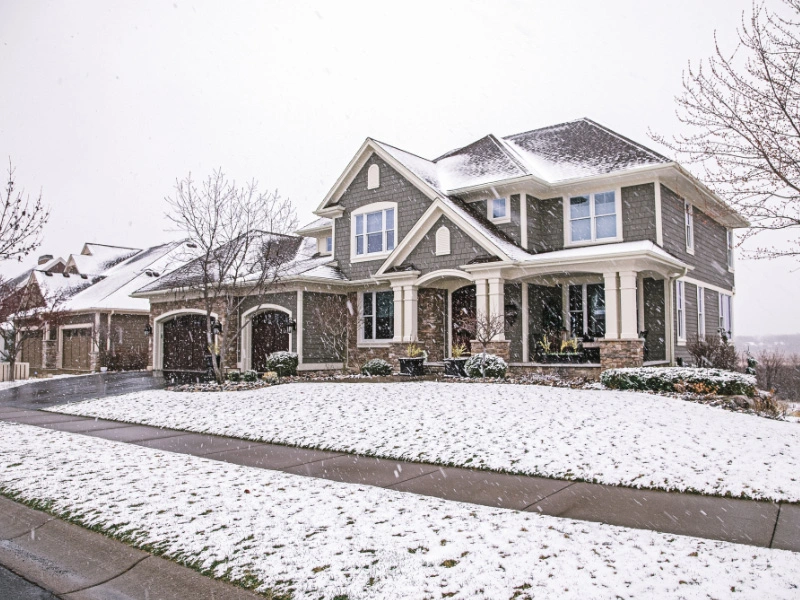
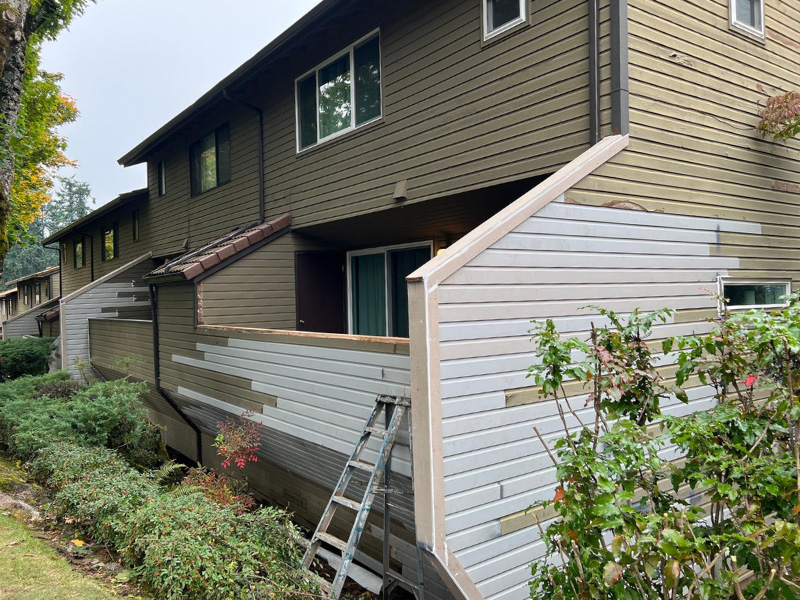
Replacing Siding In The Summer
Similar to springtime, the summer has potential good siding installation days. The mild temperature summer days mixed with dryness would be great. However, most regions are met with high heat in the summer (“When’s the Best Time of Year for a Siding Installation?”), which can cause issues with some siding materials. Vinyl siding, especially, can expand in the heat and then crack when it contracts in the chill of winter.
Pro Tip: If you’re opting to have a siding replacement done in the summer, spring or winter we recommend choosing fiber cement siding for your installation. Sister Siding uses fiber cement siding for siding installations because it’s reliable against all kinds of weather and external factors and has resistance to warping, rot, heat (Glaze), and moisture damage, which makes it an all season siding material.
Trusted Local Siding Contractor In The Portland Metro Area
Regardless of when you need your siding replaced, you can count on the contractors at Sister Siding to get the job done efficiently. A siding replacement isn’t always ideal, but it is definitely worthwhile when your home needs it. If you still aren’t sure when to replace the siding on your home, and you’re in the Portland area, get an inspection from Sister Siding. We can help you make the right decision for your home.

